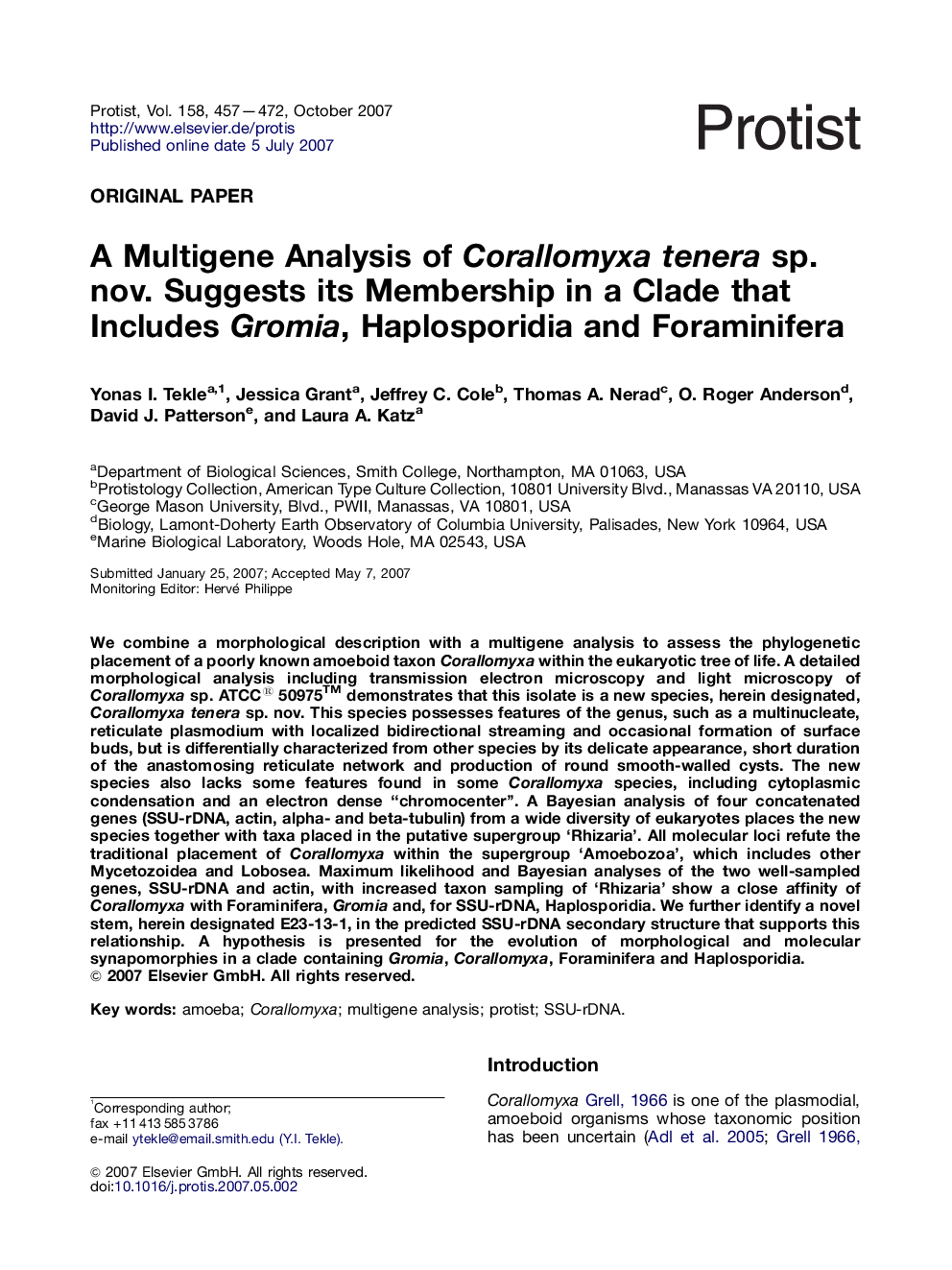| کد مقاله | کد نشریه | سال انتشار | مقاله انگلیسی | نسخه تمام متن |
|---|---|---|---|---|
| 2062069 | 1076556 | 2007 | 16 صفحه PDF | دانلود رایگان |

We combine a morphological description with a multigene analysis to assess the phylogenetic placement of a poorly known amoeboid taxon Corallomyxa within the eukaryotic tree of life. A detailed morphological analysis including transmission electron microscopy and light microscopy of Corallomyxa sp. ATCC® 50975™ demonstrates that this isolate is a new species, herein designated, Corallomyxa tenera sp. nov. This species possesses features of the genus, such as a multinucleate, reticulate plasmodium with localized bidirectional streaming and occasional formation of surface buds, but is differentially characterized from other species by its delicate appearance, short duration of the anastomosing reticulate network and production of round smooth-walled cysts. The new species also lacks some features found in some Corallomyxa species, including cytoplasmic condensation and an electron dense “chromocenter”. A Bayesian analysis of four concatenated genes (SSU-rDNA, actin, alpha- and beta-tubulin) from a wide diversity of eukaryotes places the new species together with taxa placed in the putative supergroup ‘Rhizaria’. All molecular loci refute the traditional placement of Corallomyxa within the supergroup ‘Amoebozoa’, which includes other Mycetozoidea and Lobosea. Maximum likelihood and Bayesian analyses of the two well-sampled genes, SSU-rDNA and actin, with increased taxon sampling of ‘Rhizaria’ show a close affinity of Corallomyxa with Foraminifera, Gromia and, for SSU-rDNA, Haplosporidia. We further identify a novel stem, herein designated E23-13-1, in the predicted SSU-rDNA secondary structure that supports this relationship. A hypothesis is presented for the evolution of morphological and molecular synapomorphies in a clade containing Gromia, Corallomyxa, Foraminifera and Haplosporidia.
Journal: Protist - Volume 158, Issue 4, 23 October 2007, Pages 457–472